Through the year with Schütz (III)
Spring, love and a longing for peace
On 6 November 1672 (according to the Julian calendar, or 16 November in our present-day Gregorian calendar) Heinrich Schütz, Kapellmeister to the electoral court in Dresden, died there at a great age. The 350th anniversary of his death in 2022 gives us the opportunity to remember one of the most important and pioneering composers in our history of music. Heinrich Schütz’s wide-ranging output allows us to accompany him through the year in almost every combination of vocal music (almost all of his surviving works are vocal), and to commemorate him throughout the whole year with music appropriate to the season.
For me Schütz is the composer of biblical texts: I practically grew up with Schütz – as a young singer in a choir, then as an instrumentalist. When I hear or read many passages of scripture, the setting by Heinrich Schütz immediately comes to mind. He set text in such a way that the words and music almost seem to merge into one.
But Schütz also set other texts; his Daphne, steeped in legend, but sadly missing, comes to mind. And of course there is Schütz’s Opus I: Il primo libro de Madrigali die Henrico Sagittario, Venezia 1611, SWV 1–19, his apprentice work. His setting of Italian pastoral lyrics by the most popular poets of the day – largely by Battista Guarani (1538–1612) and Giambattista Marino (1569–1625). They are of course about love, although most are about unrequited love, and about spring (O primavera, gioventù de l’anno (O Spring, youth of the year)), nature (Selve beate (Happy woods)), and time and again about the pains of love. Great music which definitely stands up to comparison with the Italian contemporaries! This is certainly not music for large choirs, but can by all means be performed chorally.
The boundary between secular and sacred is not always as clearly marked as with the Italian madrigals. The theme of love is also found in sacred texts. In Heinrich Schütz’s day the texts of the Song of Solomon were particularly popular; these have their origins in secular love poetry and were often set to music accordingly. It is no coincidence that Aquilio Coppini (d. 1629) chose texts from the Song of Solomon for his sacred versions of Monteverdi’s madrigals published in 1607 and 1609 (selection in Carus 4.024); Monteverdi’s settings of the Song of Solomon Nigra sum and Pulchra es in the Vespers!) also come to mind. And the Song of Solomon also contains a great deal about the pain of love and longing. Schütz set the longing of the lovers in the Song of Solomon settings with great depth of feeling in Part 1 of the Symphoniae sacrae, also published in Venice: Anima mea liquefacta est SWV 263/264 and In lectulo per noctes SWV 272/273. “Si in veneritis dilectum meum, ut nuntietis ei, qui amore langueo” (If you find my beloved, tell him that I am sick with love’) is how the second section of Anima mea liquefacta est, rich in dissonances, ends.
Love is also at the center of Schütz’s Hochzeitsmusiken (Wedding Music). The magnificent concerto Freue dich des Weibes deiner Jugend (Rejoice with the wife of thy youth) SWV 453 was composed to a text from the Song of Solomon for a wedding celebration, further details of which are unknown to us. The exultant opening verse is sung several times as a tutti ritornello, whilst it continues in a more relaxed solo setting. Each time the reasons for the joy are stated: “Sie ist lieblich wie eine Hinde und holdselig wie eine Rehe” (Let her be as the loving hind and pleasant roe). Admittedly, we would choose other images nowadays, but with the gripping, madrigalian chromaticism and the abrupt harmonic modulations, we can excuse the text! After the next tutti, it becomes imitative “Lass dich ihre Liebe allzeit sättigen” (Let her love satisfy thee at all times), but then “und ergetzet (ergötzet) dich allewege mit ihrer Liebe” (and be thou ravished always with her love) with happy sixteenth note garlands. The last ritornello follows and then ends in an A major final chord. You might think the piece has finished, but no, as earlier at the end of the first ritornello, the two cornetts once again swop positions over the final chord: the second goes from a2 via g2 and f2 to e2, and by contrast the first from e2 via f sharp2 and g sharp2 to a2, i.e. against the held A major chord they first play f sharp/g, then g sharp/f; then you press the repeat button on the CD player and think, have I heard correctly? Yes, it’s crazy. Such a confirmation in the final chord.
Peace plays an important role at all times; we are noticing this in Europe right now, much more than we would like to. It was no different during Schütz’s time. From 1618–1648 the Thirty Years War raged in Europe and Saxony was a theater of war time and time again. And then, as now, during the war the parties met in order to try to negotiate a peace. Unlike today, church services with music were a firmly-established part of the process. Heinrich Schütz participated in such meetings several times and wrote compositions for these. Despite the grand ideas encapsulated in it, Schütz’s Da pacem Domine SWV 465 relates closely to the electoral assembly held at Mühlhausen in 1627 and is therefore seldom performed. The piece is scored for double choir. One choir, accompanied by gambas, sings the Latin Da pacem Domine in diebus nostris, whilst the other greets the Electors and the Emperor with Vivat calls: the Electors were received with due respect, but emphatically sent on their way with the peace treaty (the Carus edition also includes an alternative text for the Vivat calls).
As a musicologist, Dr. Uwe Wolf is particularly at home in the 17th and 18th centuries. The focus of his work ranges from the time of Monteverdi and Schütz to Bach and the generation of Bach’s sons and pupils through to Viennese Classicism. He has been head of the editorial department at Carus-Verlag since October 2011. Prior to this, he worked in Bach research for over 20 years.
Heinrich Schütz Italian madrigals
- Schütz complete edition, vol. 1: Carus 20.901
- Schütz complete recording, vol. 2: Carus 83.237
Symphniae Sacrae I
- Schütz complete edition, vol. 7:
Carus 20.907 - Schütz complete recording, vol. 14:
Carus 83.273
Psalmen & Friedensmusiken
- Schütz complete recording, vol. 20:
Carus 83.278
The occasion for which Psalm 85 Herr, der du bist vormals genädig gewest (Lord, thou has been favorable unto thy land) SWV 461 was composed is not quite certain. Several factors suggest that the Psalm was composed for a similar electoral assembly of 1631 in Leipzig. The psalm text recalls God’s earlier grace, asks for comfort in the current situation and articulates the longing for peace: “Ach, dass ich hören sollte, dass Gott der Herre redete; dass er Friede zusagte seinem Volk” (I will hear what God the Lord will speak: for he will speak peace unto his people). The Psalm ends confidently. “Doch seine Hilfe ist nahe denen, die ihn fürchten” (Surely his salvation is nigh them that fear him); a message which Heinrich Schütz underlined with the added “ja, ja, ja, ja”! It is an unusually extensive psalm composition for Schütz, with a duration of 12 minutes. But in its clear structure and sequence of the most varied musical ideas and forms, it never loses interest. As so often, the scoring of this far too seldom heard music is variable (ripieno choir and trombones ad lib.) The psalm about peace by Schütz chosen here is also found in a smaller scoring in the Becker Psalter SWV 182.
Herr, der du bist vormals genädig gewest
SWV 461
Carus 20.461
Naturally Heinrich Schütz’s peace music Verleih uns Frieden genädiglich (O Lord, now grant us thy peace in grace) SWV 372 from the Geistliche Chor-Music of 1648 should not be left out (read more about it in Iris Pfeiffer’s favorite work); this can also be sung with its Part 2 Gib unsern Fürsten und aller Obrigkeit (Grant to our people), where the word “Fürsten” (princes) can also be interpreted in a broader sense. We can enjoy experimenting with the scoring of this five-part motet: choir alone, choir with instruments colla parte, or vocal-instrumental mixed? The opening might suggest a performance with the two soprano parts sung (solo or chorally), and the lower parts played by instruments. But by measure 37 (“der für uns könnte streiten” (‘who can make intercession for us’)) should the tenor part also be sung (or do all voices enter in M 37 as well?). The range of performance possibilities is large, but as Schütz wrote in the preface to the Geistliche Chor-Music, the “verständige Musicus … dergleichen selbsten wohl vermercken/ und dahero mit dero Anstellung gebührlich zuverfahren wissen wird” (‘the understanding musician … will take good note of such things himself/ and will therefore know how to proceed properly with the arrangement’).

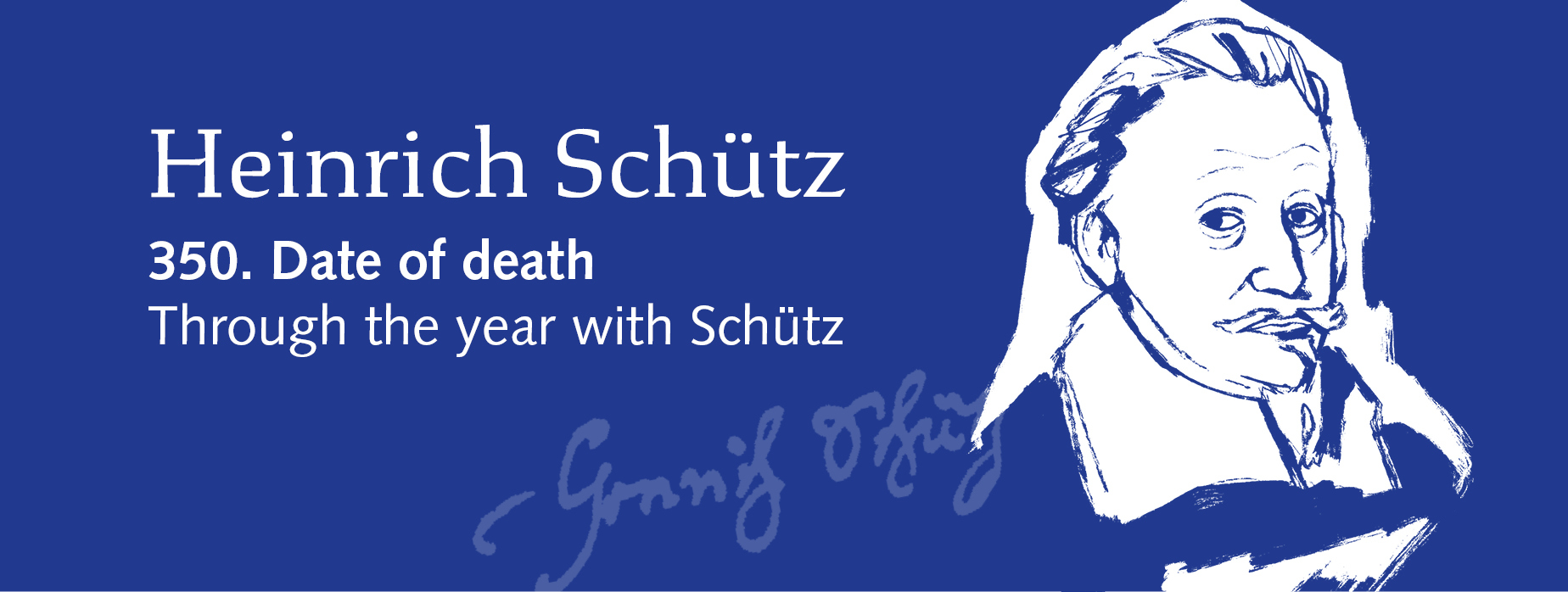
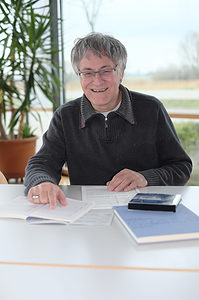
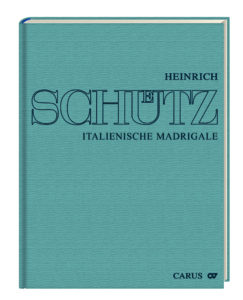
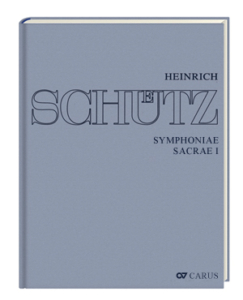
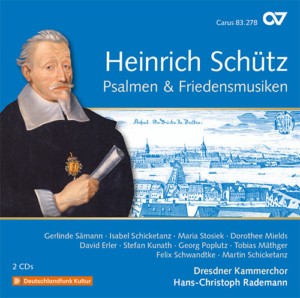
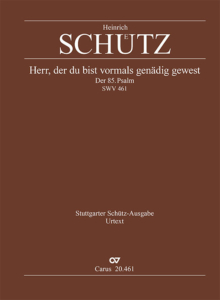
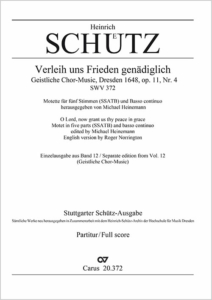
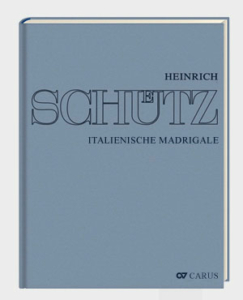
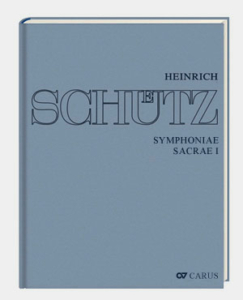

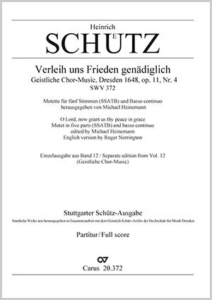
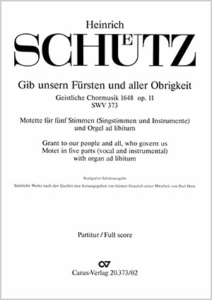
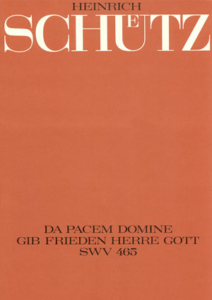
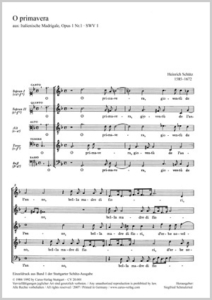

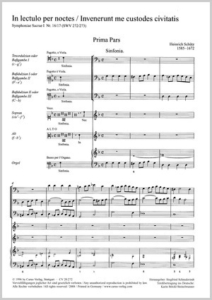

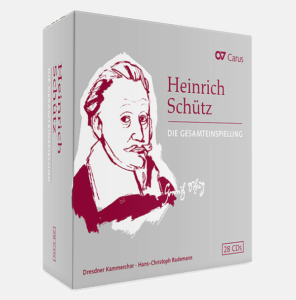


Leave a Reply
Want to join the discussion?Feel free to contribute!